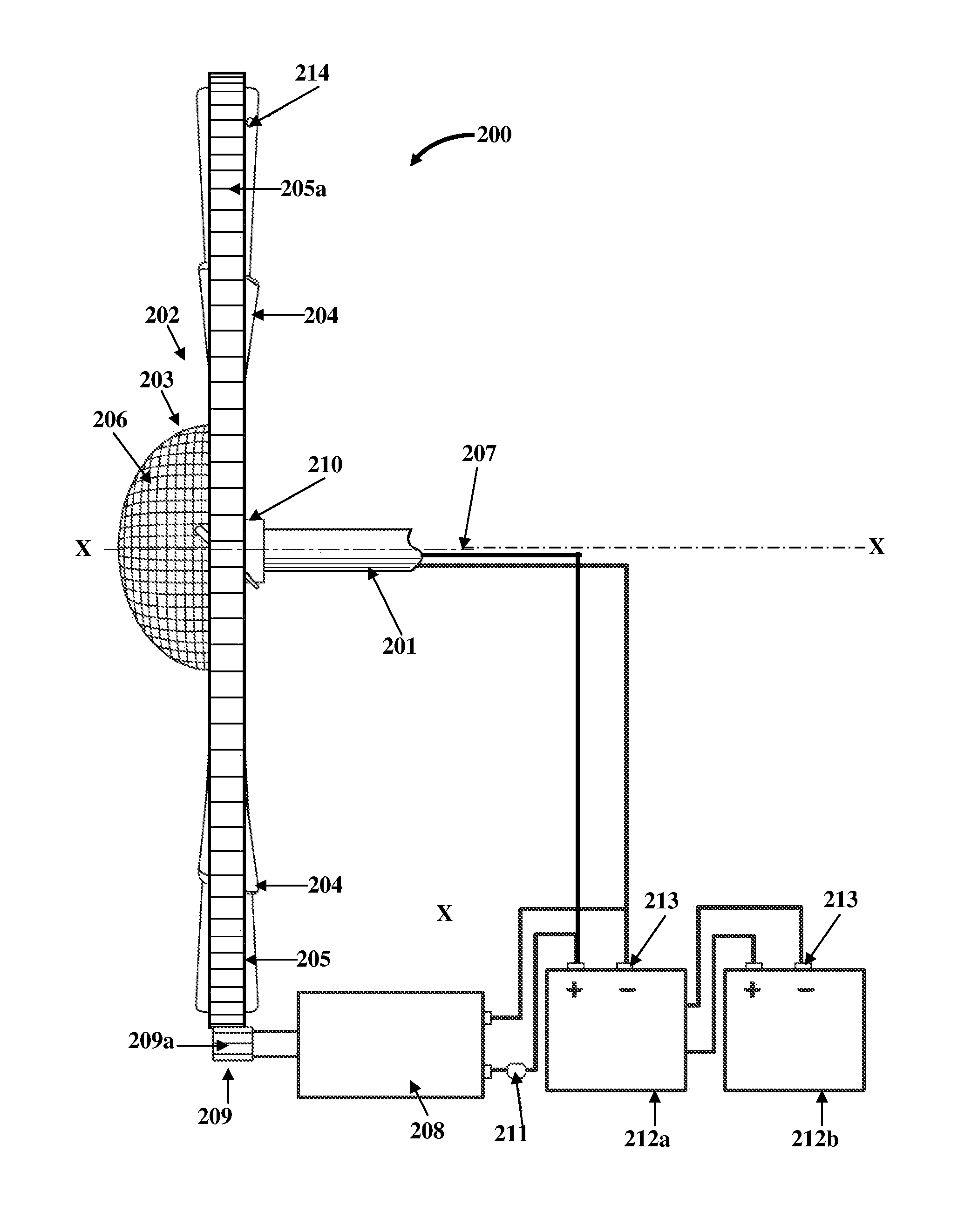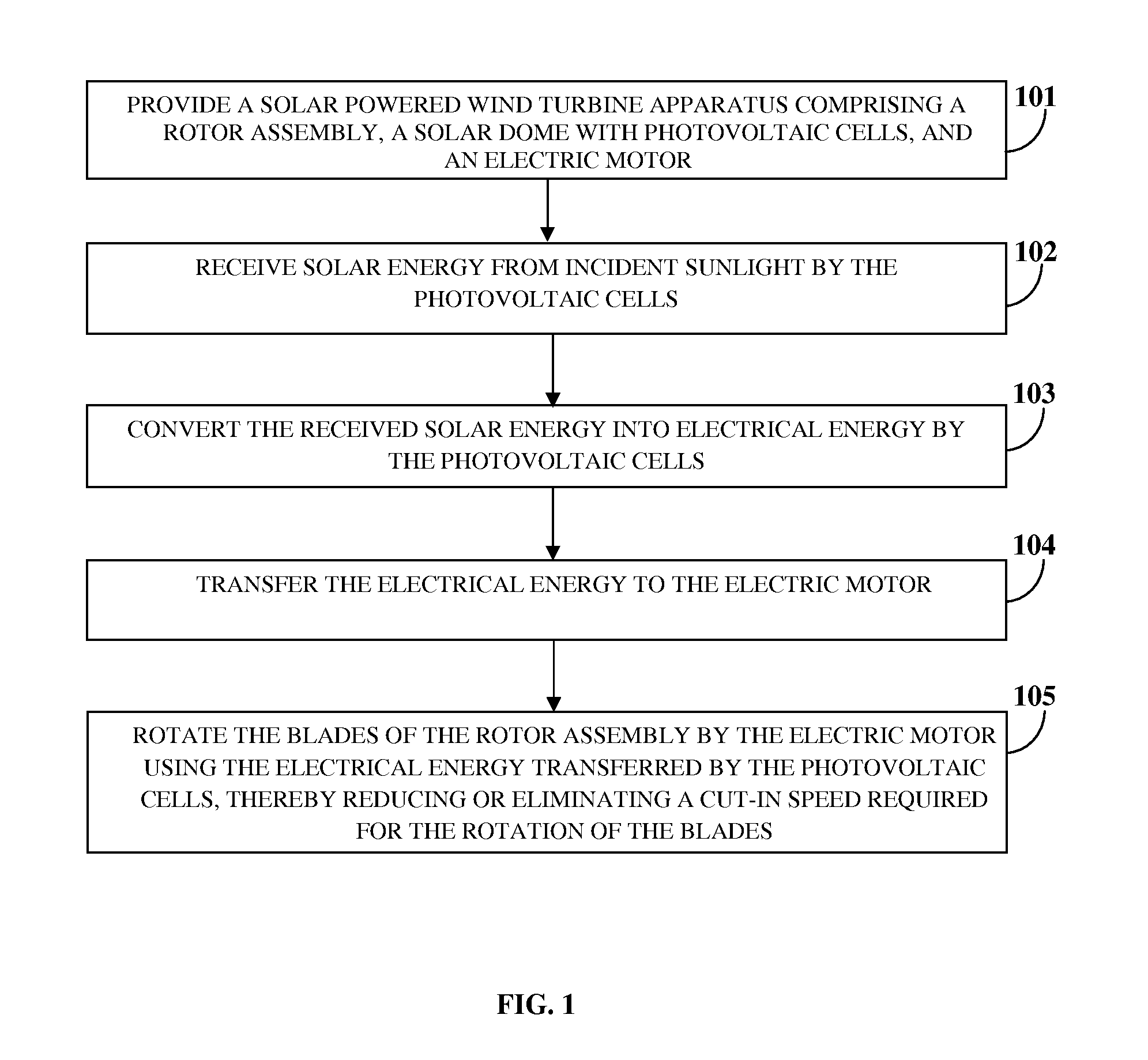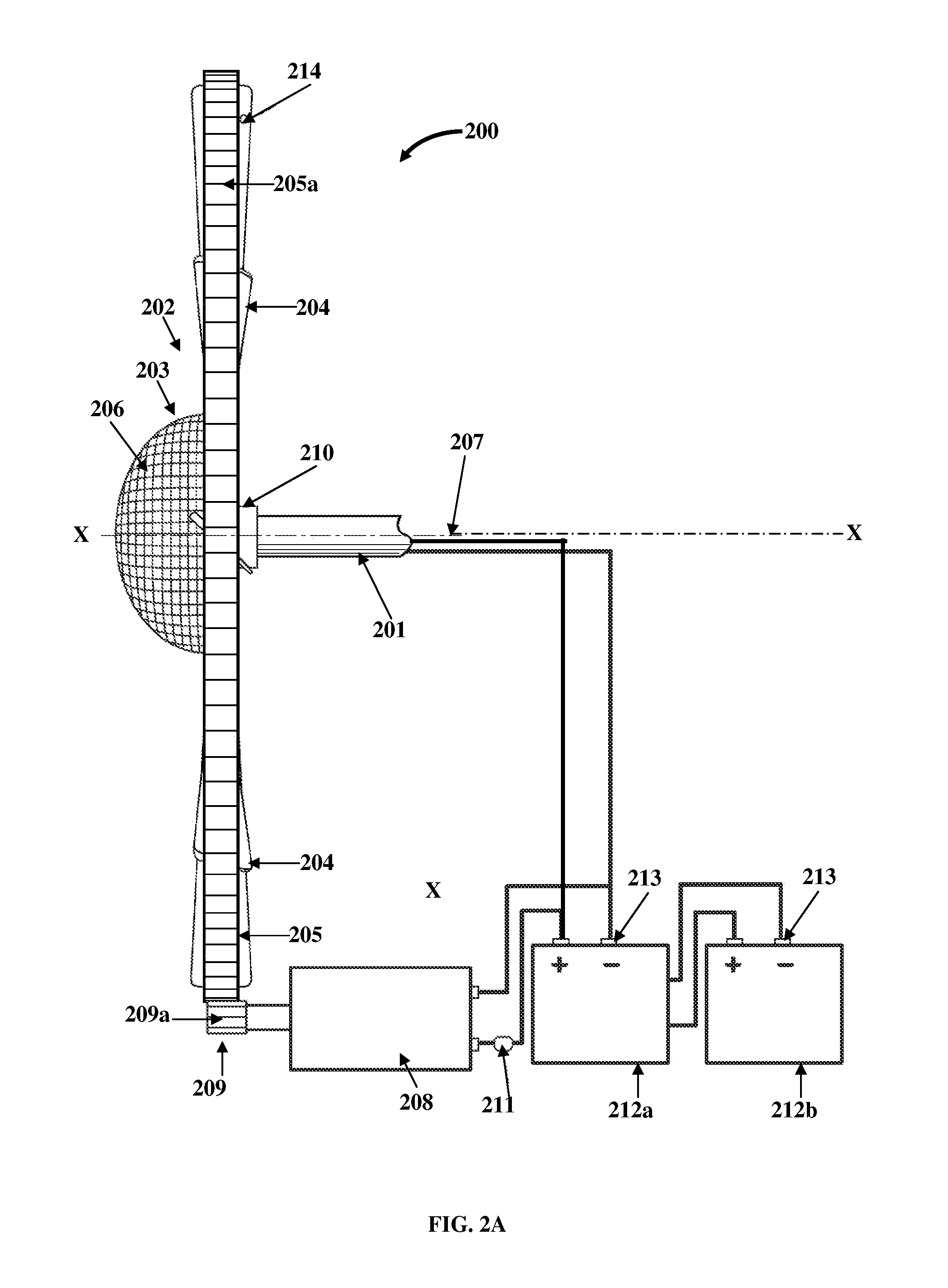Solar Powered Wind Turbine Apparatus For Reducing Or Eliminating Wind Cut-in Speed
a wind turbine and solar energy technology, applied in wind turbines with solar radiation, electric generator control, greenhouse gas reduction, etc., can solve the problems of low electric power production, and non-rotation of wind turbine blades
- Summary
- Abstract
- Description
- Claims
- Application Information
AI Technical Summary
Benefits of technology
Problems solved by technology
Method used
Image
Examples
Embodiment Construction
[0015]FIG. 1 illustrates a method for initiating rotation of blades 204 of a wind turbine 200 or 300 exemplarily illustrated in FIGS. 2A-2B and FIGS. 3A-3B, when the speed of wind is less than a cut-in speed, thereby reducing or eliminating the cut-in speed requirement of the wind turbine 200 or 300. As used herein, the term “cut-in speed” refers to a minimum speed of wind at which the blades 204 of a wind turbine 200 or 300 start rotating in response to power from the wind or an alternative source. By way of example, consider a wind turbine 200 or 300 that has a cut-in speed of 5 miles per hour. When the speed of the wind traversing the wind turbine 200 or 300 is, for example, from 0 miles per hour to any speed less than 5 miles per hour, the blades 204 of the wind turbine 200 or 300 will not rotate. When the wind speed traversing the wind turbine 200 or 300 reaches 5 miles per hour, the blades 204 of the wind turbine 200 or 300 will start rotating. In this example, the method disc...
PUM
 Login to View More
Login to View More Abstract
Description
Claims
Application Information
 Login to View More
Login to View More - R&D
- Intellectual Property
- Life Sciences
- Materials
- Tech Scout
- Unparalleled Data Quality
- Higher Quality Content
- 60% Fewer Hallucinations
Browse by: Latest US Patents, China's latest patents, Technical Efficacy Thesaurus, Application Domain, Technology Topic, Popular Technical Reports.
© 2025 PatSnap. All rights reserved.Legal|Privacy policy|Modern Slavery Act Transparency Statement|Sitemap|About US| Contact US: help@patsnap.com



